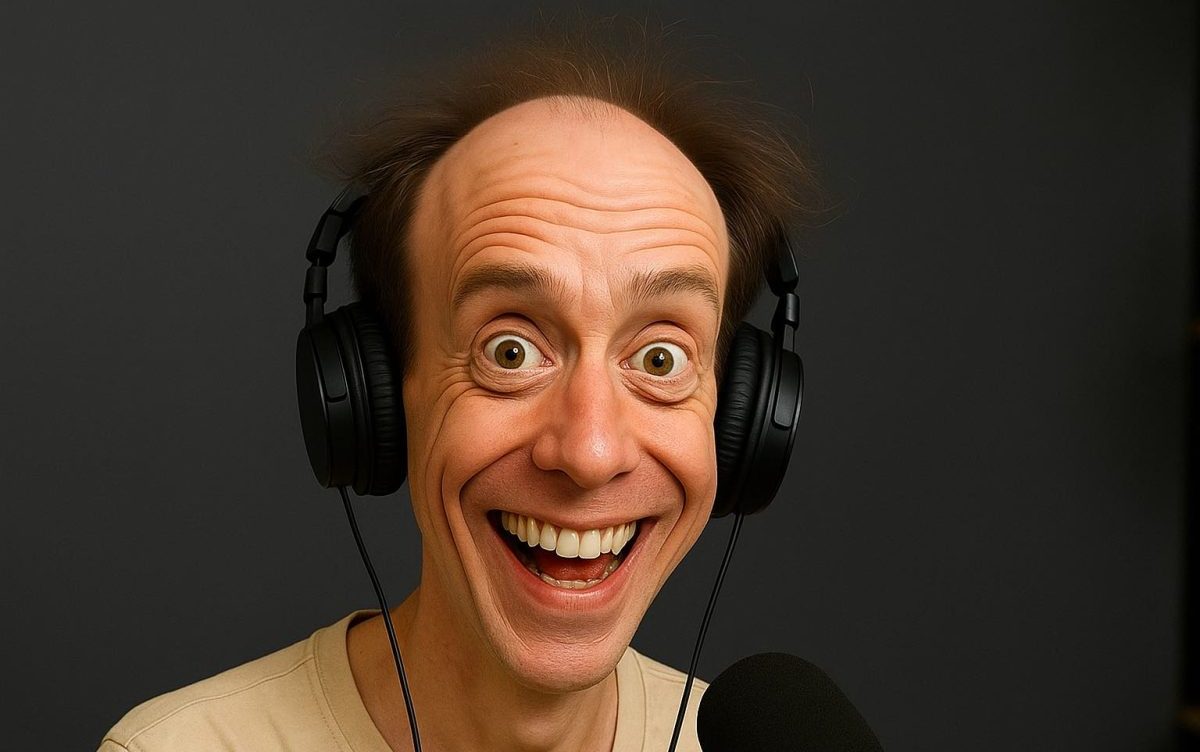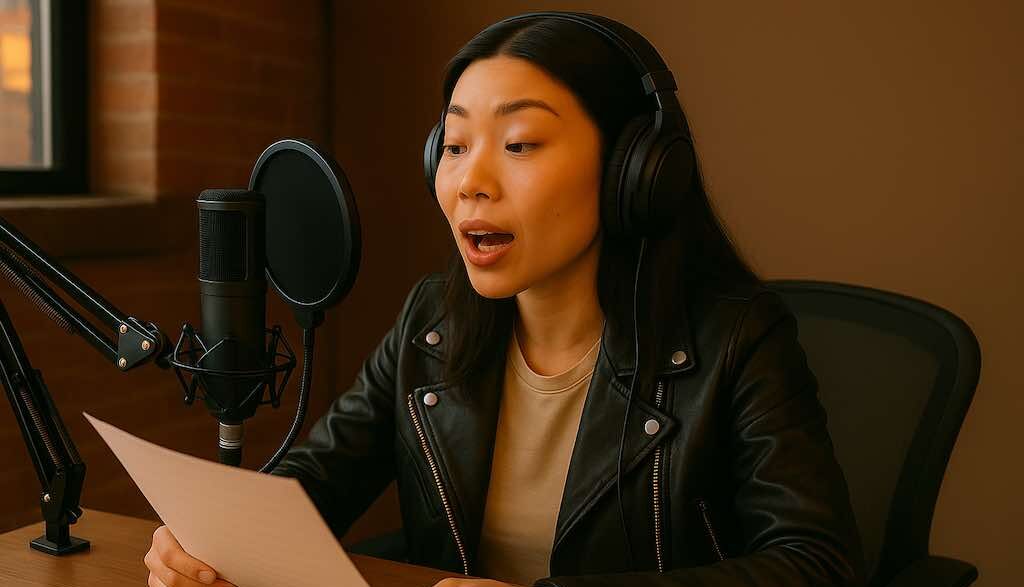Podcasting is hot. Last year in English speaking countries, like Canada and the U.S, one in four adults listened to a podcast at least once a month.
The key question here is: how do you make a successful podcast? Well, it depends. A podcast could be a series of interviews, an in-depth documentary or a discussion about a particular subject.
Whatever form it may appear in, there are still a number of things that you will be able to recognise in any successful podcast, we’ve also published a video about it below:
YouTube video on the 7 tips for a great podcast
Here in The Netherlands podcasting isn’t that big yet, but here too it’s clear that the medium is growing quickly. Not just in the numbers of listeners but also, logically, in the number of podcasts that are being made.
Big media companies like Nu.nl, NRC, the NPO and BNR are investing in them and even businesses like ING and Netflix have recently discovered that it’s a great marketing instrument – Not to mention the number of new creatives and hobbyists jumping on the bandwagon.
Here’s a short list of the 10 most important tips to make a successful podcast.
1. Choose your niche
Podcasts are basically a niche medium. Naturally there are news podcasts and popular true crime series that speak to a wide audience, however in general the power of them lies in their ability to focus on a very specific group.
Podcasts are the perfect medium to take a deep dive into a topic. In 15, 30 or even 60 minutes, you can take people with you into the depths of your chosen subject matter. And the more specific that subject is, the more loyal your audience will be.
With a niche you can also set yourself apart from the competition. A concrete example would be: in the podcast CMO Talk, that we produce for Adformatie and Energize, the guests are only ever the Chief Marketing Officers of large companies.
You could of course make a general interview podcast about marketing, but the fact that the guests are exclusively CMOs, makes the concept unique and memorable. It is also an indication of the level of discussion that is to be had on the matter.
2. Make sure you’re memorable
The second step to creating a successful podcast, is being able to tell a story, be it conversational or in the form of an interview. It’s important in any story to have a clear through line that runs throughout the episode from beginning to end, and that also links the different episodes together.
A number of set questions or items can help with this. The same thing goes with, for example, a memorable round up at the end. Memorable elements make sure that the listener gets a trustworthy feel from the podcast and can help hold onto them.
So, be sure that you have a real format; a style guide that is memorable, just like well-known radio or tv programmes have.
For Sprout and Management Team we produce the Business Books Podcast. For this we’ve thought up a number of simple, recurring aspects. For every discussion of a book, we start with: ‘What do the reviews say?’ And we finish up every time with: ‘Who’s it for?
Would you buy this book for yourself or as a gift, etc.’ This is the glue with which you hold your format together and make it a memorable whole.

3. Make sure you have good sound quality
Question: Do you want to listen to echoing walls or a to a good interview? Nothing is as irritating as a podcast that is difficult to understand. So, book a studio or make sure you are in a room that doesn’t have too many noise reflections.
And of course, record with the right microphone. In other words: A good podcast is ear candy.
Maybe this is obvious but it’s incredibly important to make sure that your podcast sounds great. You could of course tape a podcast with the built in mic on your smartphone, but as a listener you would notice that immediately.
Quality wise it just sounds under par, and then it is difficult to keep concentrating on it. Many of the better podcasts are, for this reason, recorded in a studio.
For most podcasters a (radio) studio is the best place to record, without background noise or echo. Are you holding an interview or discussion with multiple people? Then make sure that everyone has their own mic. Preferably you record each mic separately, on a different track. When editing you can then easily cut out any sputtering and you can adjust the volume per speaker if necessary.
4. Pair it with video
In 2023, it was reported that people are watching 17 hours of online video per week. This number is only growing with time, so it makes sense to pair your podcast audio with engaging video content.
One great example of a successful podcast, in fact, the most successful podcast in the UK “Diary of a CEO”, utilised video to spread the message and get where they are today. Another few examples of podcasts that used video to their advantage are “The Joe Rogan Experience”, and “ShxtsNGigs”.
Not only can you build a loyal following with high quality audio, but you can also give it a face and potentially double your viewership with an equal calibre of video content.
5. Utilise social media
What good is video content without social media? It won’t go very far without promotion, that’s for sure.
When you’ve finished the video shoot of your podcast, you can take all the best bits and turn them into clips. The best thing about this is that you can turn these into 10, 15 and 30 second clips, and potentially even clips that are a minute long or more.
You can be flexible and tailor content for different platforms, essentially making it so you don’t have to think too much about maintaining your social presence. Remember, some of the most successful podcasts utilised social media as a tool, and you should too!
6. Do not underestimate the mounting and editing
It is a giant misconception that you can just tape a podcast and then put it straight online. Just as with video, the mounting and editing is essential to achieving a good result. Even when your podcast consists of a discussion or interview.
By cutting out the odd slip of the tongue or long diversions, the podcast will sound more professional and will better hold the listeners’ attention. It is in any case a good idea to listen to the podcast from the listeners’ point of view. Can you keep your own attention on it? Dare to chuck out material if it isn’t helping your podcast!
You will also need to make sure that the sound has a good finish to it. Clean up any rustling or popping, and check that the volume of each speaker is equal. A light form of sound processing can already mean that a podcast is easier to understand (especially if, for instance, people are listening to it in the car).
Beware of the sound processing used by the majority of radio stations though. If the sound of your podcast is like that of a hit radio station, that can be really tiring for your listener.
Podcasts, such as that of The New York Times really take this a long way, as you can see in this interview, for example.
Such a long way in fact, that sometimes whole sections are rerecorded. But then, yeah, you’re really in the Champion’s League of podcasting.
7. Understand the laws of radio
Last summer, I listened to gobsmacked to the podcast Stages from Lance Armstrong. Lance, the fallen hero of cycling, would follow up the day’s etappe of the Tour de France with a daily podcast.
Noticeable is that he shows a raw presenter’s talent. For those in the know: yes, he does this programme together with an experienced radio maker, who knows exactly how this game works, but what is surprising is that Lance is the leader of the duo and seems to use him as a sidekick more than a touchstone.
If you don’t as yet have any presenting experience, bear that in mind when you choose a recording studio. Presenting is a bit different than producing ads. The right people will be able to show you the way..
8. Make sure you have a catchy jingle to open and close with
In the edit you can also add audio fragments or music to your podcast. A memorable opening jingle or tune is essential to pull the listeners in. They know exactly what they’re listening to when they hear it again, and it can also help to give new listeners an immediate impression of the atmosphere of your podcast. With an end tune you create a clear ending.
Pay attention to music rights: if you use pre-existing music that is under copyright, then in principle you must pay for rights via organizations such as Buma/Stemra and Sena. Rights free music or jingles/tunes that are specially composed for your podcast are the best way to work around this.
A jingle is also referred to as an ‘audio logo’. And not without good reason: a good logo can make a brand. And so it is with the right opening jingle too. A top jingle can give your podcast wings!
Pay attention to the sound of your opening jingle. A jingle that sounds very hit radio, can be a bit out of keeping with a spoken podcast. As if the newest hit from Martin Garrix is going to be coming up next, instead of a presenter that calmly explains what the podcast is about.
9. Make sure you have listeners
Podcasts have already been around quite a long time. When I started out for myself, back in 2007, we produced radio formats, podcasts and online radio streams for brands, media platforms and webshops; under the name One-o-Niners.
We were too early. Downloading the podcasts was a particular problem. Until 2013 the data subscriptions were just too expensive to listen to streamed audio while you were out and about or in the car. And that’s where the vast majority of listening happens.
I now receive multiple requests a month to produce successful podcasts, and it’s been that way for around a year. Crazy as it sounds, one of the most commonly asked questions remains the same: ‘How many listeners does that bring in, a podcast?’ Unfortunately, there’s no concrete answer to that. There wasn’t back in 2007 and there still isn’t today.
How big is your niche? How much competition do you have? How consistent is your podcast going to be? How big are the names that you’re interviewing? How are your reviews in iTunes? Do you have a good media partner? These are the questions you should be asking.
10. Keep it consistent
Despite the love for trends and keeping things fresh, beware not to introduce too much change. When you tune into your favourite podcast, you typically sit through a consistent structure, which could be a brief introduction of the host and guest(s), followed by talking points.
Your structure could literally be anything, but for consistency’s sake, try to ensure you don’t stray too far from how your regular episode is laid out. This is useful for audience retention, and developing a sense of familiarity which is necessary for building a loyal audience of listeners.
Your listeners want to know what’s coming next, and keeping your episode structure consistent is the best way to go about it. That being said, it’s also important to keep the rate at which you upload episodes consistent, be it monthly, weekly or daily, try to set a date and stick to it.
Maintaining consistency in both the way you record your episodes and how frequently you upload them will play a huge part to running a successful podcast.
Successful podcast example: The New York times
A great example of a successful podcast is The Daily from The New York Times. This daily news podcast was the biggest podcast success of 2017. Every weekday at 6 am (local time in New York) Michael Barbaro talks you through a new topic. For hundreds of thousands of people this has become the way to start the day.
At The New York Times itself this has brought change with it: since 1851, when the paper was founded, being featured on the front page was always considered to be the height of journalistic achievement, now that is being featured on The Daily. Every journalist wants to come on the podcast to talk about their story.
If you listen to The Daily 10 you will notice that the podcast doesn’t just consist of interviews though. Michael Barbaro talks to his colleagues about the story that they have chosen, meaning they oftentimes don’t go in depth on the subject straight away.
The news is, for example, told chronologically and/or the background to an event is sketched out. A real story is put together and that means it’s often the case that the news itself doesn’t come up for discussion until 10 or 15 minutes have gone by.
Moreover: some facts are often consciously withheld, only to be brought back into the story at a later point, because that provides a much better narrative, and that means you have no choice but to become absorbed in the story. Not giving away all the details at once creates curiosity.
Show business is slow business.
What are your favourite podcasts? Let us know in the comments.




